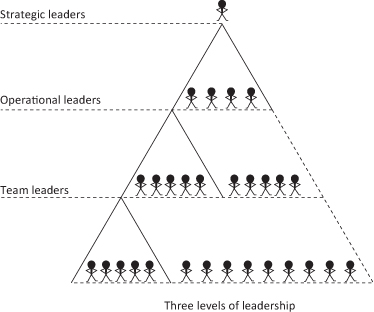Idea 92: Directions or flows of information
Communication is more than words. It is the imparting of meaning – voluntarily or involuntarily – and it flows. The most obvious direction of flow is downwards from the top to the bottom, or, if you prefer it, from the centre to the periphery.
Imagine a military command post where the general briefs his commanders, who in turn brief their captains. There are three levels of leadership at work here: strategic, operational and team.

You can see that there is a formal communication structure in place to transmit and translate the general’s battle plan into action.
In the past, however, the three levels of leadership system has not been so good for upwards communication. What, you may ask, does a common soldier have to say to a general anyway? The answer was not much.
Better armies and navies did introduce constitutional systems for the upward transmission of grievances; never easy, because your immediate superior was often the source of your grievance and had no interest in passing your complaints upwards! In Nelson’s enlightened navy, for example, every sailor had the right to approach an admiral directly and make a verbal or written complaint or grievance.
What has changed out of all recognition in modern organizations is the nature of operations. Now everyone has the responsibility of passing upwards any relevant information about, for instance, product performance or quality, customer needs or the responses of competitors.
The same competitive pressures have put a premium on teamwork. That in turn sorts out the organizations that have gone sideways from those that still have brick walls instead of chalk lines, dividing them like bulkheads into a series of watertight departments or businesses. Communication in successful organizations has become a three-way process: downwards, upwards and sideways.
This need for three-way communication results in some characteristic meetings that all good leaders establish in order to give communication a structure, such as:
- One-to-one meetings (weekly/fortnightly/monthly).
- Team meetings (weekly/fortnightly).
- Departmental meetings (monthly/quarterly).
- Awaydays (quarterly/biannual/annual).
